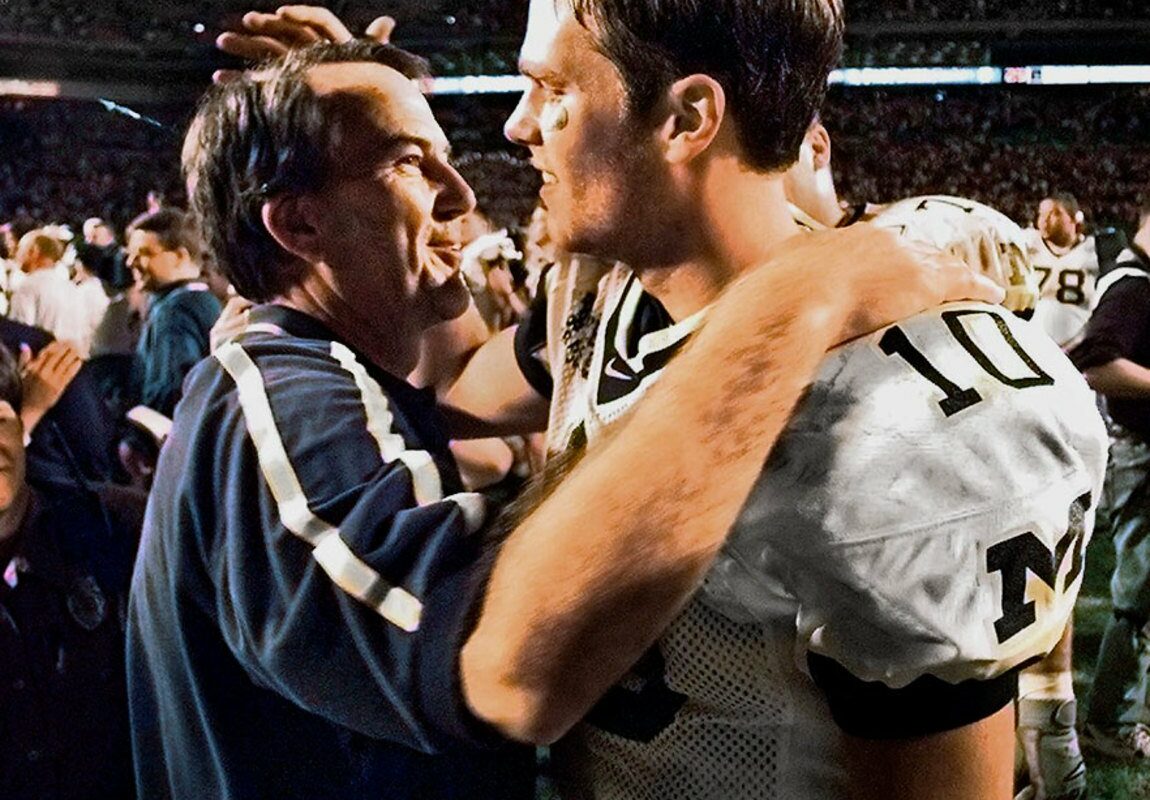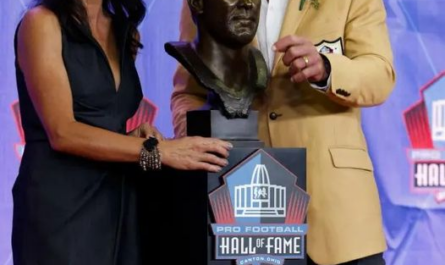Lloyd Carr’s Lasting Impact on Tom Brady
When Tom Brady emerged as a star quarterback for the New England Patriots in the early 2000s, capturing the first of what would be an unprecedented six Super Bowl victories, few could have predicted his journey. As a late-round draft pick out of the University of Michigan, Brady wasn’t considered a top prospect. However, his time under Michigan head coach Lloyd Carr from 1995-1999 helped shape Brady into the player and leader he would become. Through Carr’s coaching, the competitive environment he fostered, and his belief in Brady’s potential, the foundation was laid for one of the greatest careers in NFL history.
Coaching and Development
From the moment Brady stepped onto the Michigan campus, Carr took him under his wing. As a redshirt freshman in 1995 backing up starters Brian Griese and Scott Dreisbach, Brady soaked up everything he could from Carr. “Coach Carr was really instrumental in my development,” Brady recalled. “He taught me what it took to be successful at this level.” Carr emphasized the importance of accuracy, decision-making, and leadership. These would become hallmarks of Brady’s game.
Even when competing for playing time, Carr challenged Brady to focus on self-improvement rather than outcomes. “He wanted me to get better every day and not worry about the results,” Brady said. This mindset prepared him for his unlikely rise to stardom with the Patriots years later. Under Carr’s tutelage, Brady developed into a precise passer with the ability to command an offense.
Carr also stressed the mental aspect of the game. He pushed Brady to fully understand defenses and make optimal pre-snap reads. This attention to detail translated perfectly to Brady’s later success against complex NFL schemes. “Coach Carr taught me how to dissect defenses and understand tendencies,” Brady noted. “That gave me a huge advantage as my career progressed.”
Competition Breeds Excellence
Carr’s tenure at Michigan from 1995-2007 overlapped with a golden era of quarterback talent in Ann Arbor. Brady had to compete with the likes of Griese, who led Michigan to the 1997 national championship, as well as Drew Henson, a highly touted dual-threat star. The competition “made me a better player,” Brady said. Even as a backup, Brady took every rep in practice seriously knowing he needed to constantly prove himself.
Facing Griese and Henson in drills pushed Brady to refine his footwork, accuracy, and decision-making. “You had to be perfect in practice or you weren’t playing on Saturday,” Brady recalled. If he missed a read or throw while going against Michigan’s first-team defense, it could cost him playing time. This high-pressure environment prepared Brady for the scrutiny he’d face in New England.
The competition also strengthened Brady mentally. He couldn’t afford to get down on himself during slumps, as is common for young quarterbacks. One off game could lose him the starting job. As a result, Brady cultivated tremendous poise and focus. That mental toughness served him well during his underdog NFL rise and through adversity like the “Tuck Rule” game and the 2016 Super Bowl comeback. Carr created a culture where Brady had to perform or get left behind—and it made him the quarterback he is today.
Belief and Opportunity
Despite impressive production in his time as Michigan’s starter from 1998-1999, Brady wasn’t considered a top NFL prospect due to his lack of ideal size and arm strength. He fell all the way to the sixth round of the 2000 draft, 199th overall, where the Patriots selected him. But Carr’s belief in Brady’s intangibles might have played a role in his pro opportunity.
Carr and Patriots coach Bill Belichick had previously worked together as assistants at Michigan in the 1980s under legendary coach Bo Schembechler. So when Belichick took over New England in 2000, he likely trusted Carr’s evaluation of Brady’s potential. “I’m sure Coach Carr put in a good word for me with Belichick,” Brady said. “Their relationship was important.”
Belichick gave Brady a chance to compete for the starting job as a rookie, unlike many other late-round picks who immediately find themselves buried on the depth chart. Brady made the most of that opportunity, winning the job in his second season after Drew Bledsoe’s injury and never looking back. So while Brady fell in the draft, Carr’s confidence in his intangibles helped give Brady the opportunity to prove himself at the NFL level.
System Carries Over
The offensive system Carr implemented at Michigan, which Brady thrived in for two seasons as the starter, closely mirrored the scheme Belichick would run in New England. Both coaches emphasized precise short and intermediate passing, ball control, and exploiting matchups. This continuity allowed Brady to seamlessly transition to the Patriots’ offense without a steep learning curve.
At Michigan, Carr ran a West Coast style attack focused on rhythm throws. Brady was tasked with making quick decisions and distributing the ball to playmakers like receiver Mercury Hayes. This prepared him for New England’s emphasis on option routes, hot reads, and exploiting soft spots in zone coverage—all hallmarks of Brady’s later success.
The parallels even extended to personnel. Carr liked to use multiple tight end sets at Michigan similar to “12” and “21” personnel groups Belichick favored. So Brady was well-versed in reading linebacker drops and safety rotations pre-snap from different tight end alignments. He hit the ground running as NFL starter because of his background in Carr’s compatible system.
Lasting Legacy
Through his guidance, competition-driven culture, and belief in Brady behind the scenes, Lloyd Carr left an indelible mark on Tom Brady’s development. Carr instilled the mental toughness, precision, and leadership qualities that allowed Brady to defy the odds. And by fostering continuity from Michigan’s offense to the Patriots’ scheme, Carr helped position Brady for seamless NFL success.
Two decades later, Brady is still thriving at the peak of his powers with six Super Bowl rings—a testament to the blueprints Carr provided. While few could have predicted Brady’s unprecedented greatness, Carr played an understated but significant role in laying the groundwork. Through his coaching, Carr helped turn an overlooked prospect into arguably the greatest quarterback in NFL history. Brady will always be grateful for the foundation Carr established during their time together in Ann Arbor.



